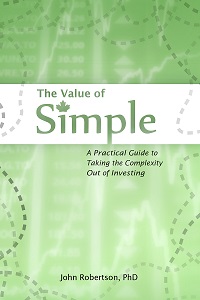David Suzuki on TVO
March 10th, 2009 by PotatoI think the last time I watched TVO was when Today’s Special was on the air (right after Polka Dot Door), but I just noticed that they have some interesting videos on their site that you can go watch, including a recent interview* with David Suzuki. I like David Suzuki, and I hate to speak against him, because he might burst through my wall and throw a basketball at my head, but he says some downright silly things about hydrogen cars. It’s just a throwaway line though, so I’ll leave that comment at that. I also disagree a bit with his comments on nuclear: I still think it’s the only medium-term solution open to us. Demand management and renewables are going to be a vital component of managing our electrical grid, but we’re still in the hole from the shutdown of 2 reactors at Pickering and Bruce, and if we want to shut down the coal plants as well then some kind of massive capacity must be built soon. There are tricky issues with nuclear, since when it goes wrong it goes wrong in a big way — whether that’s leaks, waste management, cost overruns, or whatever. You have to make sure to have massive amounts of money and trained personnel at all times for up to a century into the future, and to keep reckless people like Stephen Harper far away. The crumbling of a country and its economy/infrastructure is no reason to let your nuclear reactors go unattended, and those costs (take out an annuity?) can be massive; higher perhaps than a straightforward massive renewables buildout in the final accounting.
On the topic of demand reduction, an article about the real-world efficiency gains of CFLs is making the rounds, brought to my attention by Michael James. Because CFLs are more efficient, they produce less waste heat… but this leads to a secondary effect: when heat in your house is desirable (such as a Canadian winter) you have to replace that heat somehow, which reduces the real-world benefit of CFLs. Professor Peter Blunden at the University of Manitoba is credited with working out the math, but no news article cites a primary source other than that, so I haven’t had a chance to see how he figures it (and I’ve looked around for a primary source and can’t find one; I’m tempted to email the guy directly). After all, you will have to replace some of the lost waste heat with more efficient bulbs in the winter, but our houses are not perfectly insulated boxes at equilibrium, so heat generated (and trapped) near your ceiling is not as effective at making your house comfortable as systems designed for heat (baseboard heaters, forced air systems, etc). Plus making heat is generally quite efficient (since inefficiencies in most devices are represented as heat production!), but making cool air in the summer is nowhere near as efficient… The various news reports of this study (back of the envelope calculation?) are reporting different numbers too, with the CBC saying that “real energy saving for Winnipeggers using CFL bulbs is probably closer to 17 per cent” but the Winnipeg Free Press giving “Winnipeggers would end up with energy and cash savings of 17 per cent, similar to Manitoba Hydro’s findings. Those who use air conditioners would see savings of around 24 per cent, he said, while cash savings will be a little higher for people who heat with gas instead of electricity.” So what does that mean for someone in Toronto with less heating requirements in the winter and the A/C cranked to full for four and a half months out of the year? Seeing his work would go a long way to figuring out the real answer.
* – This interview with Allan Gregg was less of an interview than an opportunity for David Suzuki to speak. In fact, I’ve watched a number of these interviews and they were quite enjoyable because Allan Gregg is just there to help facilitate the interesting, articulate guest speaker in ranting for a half hour, it’s a great way to do an interview (since except for David Letterman or Conan O’Brien, who really cares what the interviewer has to say?). It’s a neat series to go back through the archives and watch over at TVO.
A final note: the forwarding and dynamic IP behind the scenes here look to be getting troublesome. I don’t have time in the next month or two to get around to moving hosts (and probably upgrading wordpress as well) and all that nonsense, so for now I’m just going to add a permalink to this post whenever I remember.



 Questrade: use QPass 356624159378948
Questrade: use QPass 356624159378948 Passiv is a tool that can connect to your Questrade account and make it easier to track and rebalance your portfolio, including the ability to make one-click trades.
Passiv is a tool that can connect to your Questrade account and make it easier to track and rebalance your portfolio, including the ability to make one-click trades.